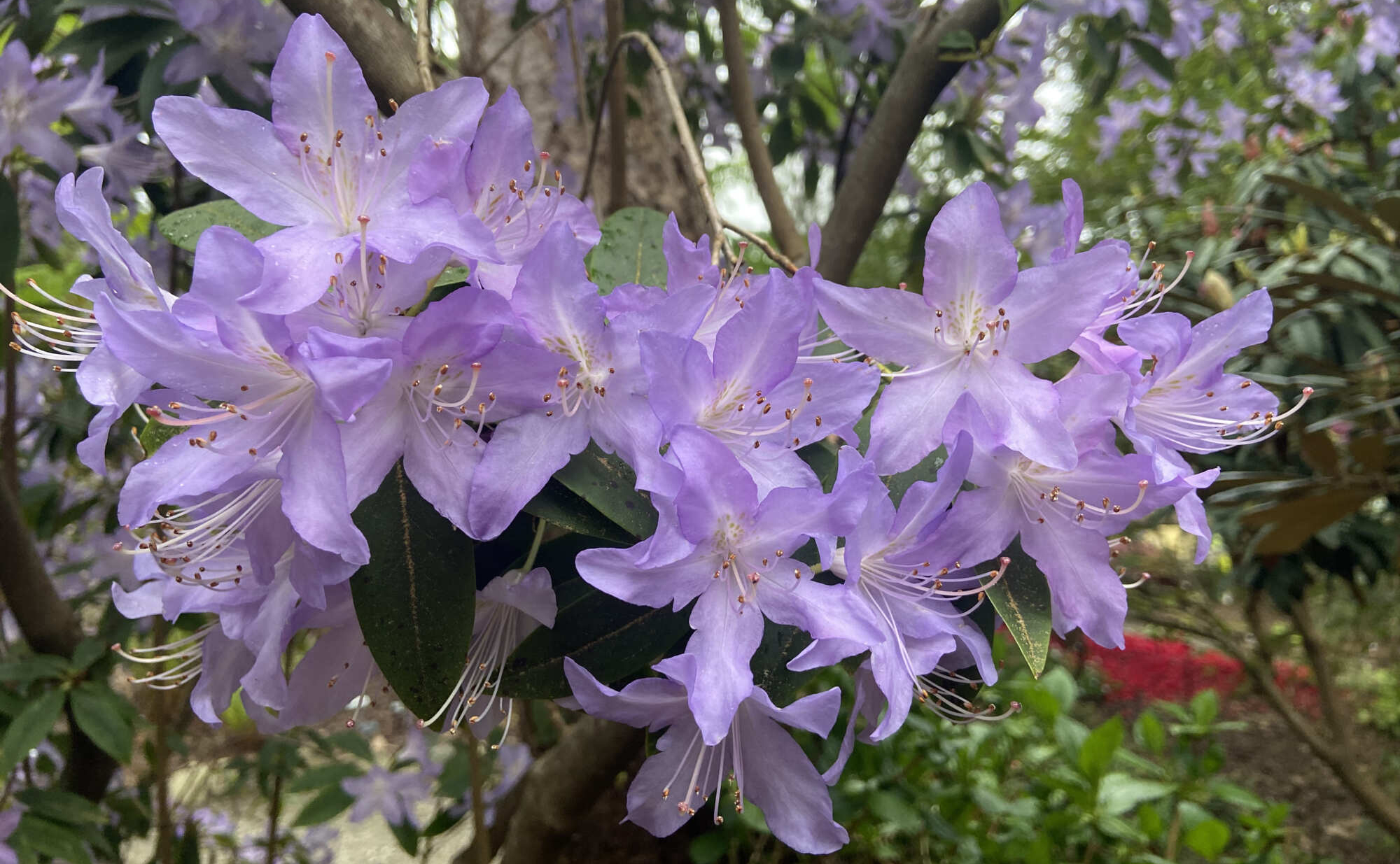Special Topics in Horticulture: Rhododendrons
For the love of Rhodos! Rhodos! Rhodos! Rhodos! Rhodos! Rhodos!
Student Blog Post by Claire Shadrake and Shawn Hildebrand
One of the most recognizable plants in many gardens, Rhododendrons are widely used in a variety of landscape designs. Odds are good someone on your street has a rhododendron in their garden! With a huge choice of form, shape, structure and size, everyone should be able to find the Rhodo of their dreams. Rhodos can be found in small, compact forms, ground cover and even large tree size species. The leaves vary greatly in texture, shape, size and colour, the underside of which can be quite a show in itself. And if that isn't enough to convince you, there are a huge variety of choices for flower shape, size and colour. Add fragrance into the mix, and we dare you to deny yourself this marvelous plant! Once established, the Rhodo is a very sturdy and well-balanced plant that can stand up well to snow and wind. Let's stop here and have a basic look at the history, with some brief information behind this marvelous plant.
Rhododendrons are part of the Ericaceae family, which are 90 million years old. Based on fossil history, there is evidence of Rhododendrons from 60 million years ago! They look pretty good for their age, don't you think? The plants evolved to form new ways to interact with fungi and have formed symbiotic relationships with up to 14 different species of them - a broader range than most other plant species. Partnerships with fungi help the plant obtain distant water and food and in turn, the plant gives food back to the fungi in the form of sugar and gives the fungi a home. Teamwork! This may be one of the reasons Rhodos perform so well in a variety of conditions and environments. They once grew quite proficiently around the world. Unfortunately, this was disrupted by glaciation (the Ice Age) and the creation of modern grasslands and deserts. Although reduced in number, they still grow around the world today, surviving in pockets where they can find refuge.
There are approximately 1,100 Rhodo species and 36,000 registered hybrids, of which 3,000 are commercially imported. These numbers are just staggering! The plant inhabits almost every temperate zone in the world, even the sub-artic. China is a hot spot of diversity for Rhododendrons, where around 90 species grow in the wild. On the mountain ranges near Nepal and Tibet, there are individual species occupying narrow banks based on altitude, from semi-tropical to alpine. They are a dominant alpine species in the Himalayas, where the plants grow in a climate that is dry in the winter and wet in the summer. Here on Vancouver Island, we have the opposite. With wet winters and dry summers, we need to pay special attention to the growing conditions of these lovely shrubs.
Here are a few tips for success:
Always plant high! This is non-negotiable, as planting too deeply can result in damage or death. The top of the root ball should be at the surface, or even a couple of inches above. Alternatively, sit the plant on top of the ground and form a mound around it with soil, coarse peat moss, bark and sand. Excellent drainage is key.
You are soil considerate! Rhodos prefers loamy soil, rich in organic matter and slightly acidic. And don't overwater the plant once established.
Surface area! While not always necessary, loosening of the outer roots before planting will help ensure as many roots as possible contact the soil. As the roots grow sideways on a Rhododendron, you are aiming for a shield-shaped and shallow root system.
Gimme shelter! While some species tolerate full sun (with sufficient moisture), most appreciate shade in the afternoon. Azaleas and lepidote species are the most sun tolerant, and Rhodos with large leaves need filtered shade all day. And did we mention not to overwater?
I spy with my little eye … something that is yellow! If the leaves on the plant have turned yellow, this may be a sign that the leaves have been bleached by the sun, or if the veins remain green, it could be a sign of mineral deficiency. For the former, nitrogen fertilizer can be used to green the leaves up again. If the latter, it may be a magnesium, nitrogen or iron deficiency – so amend your soil as necessary.
Choose carefully! Make sure to do your homework and match your Rhodo species to the microclimate you call home. Outside in your garden, in your greenhouse or even inside your home, there is a Rhodo for you.
For more information and further tips, check out the Victoria Rhododendron Society (www.victoriarhodo.ca), or speak/contact with one of the lovely staff at the Pacific Horticulture College ([email protected]), or ask one of your friendly neighbourhood horticulturists!



